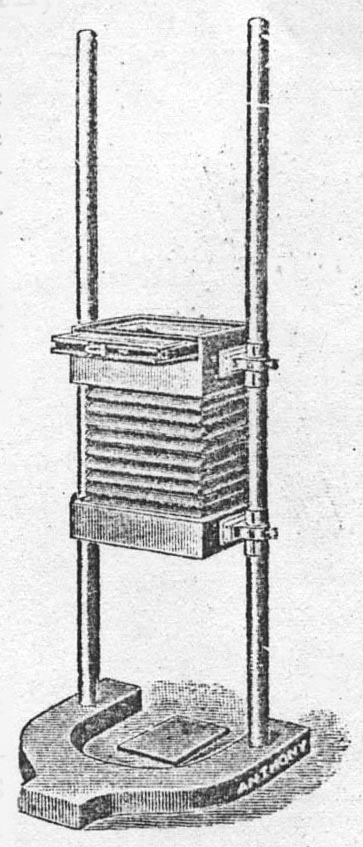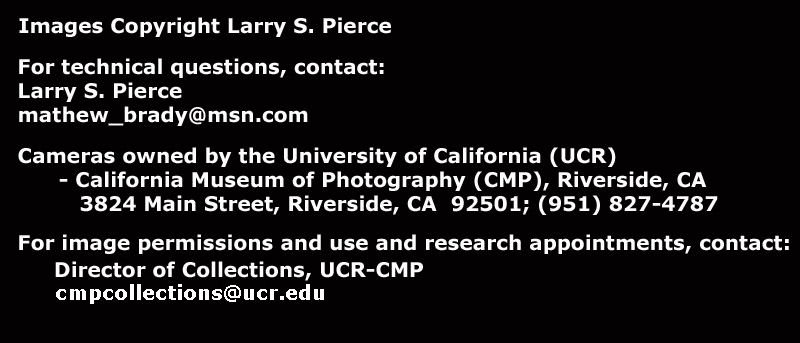E. & H.T. Anthony (probably)
Anthony's
Micrographic
Camera
(Formerly Unknown Camera
3)
4 x 5
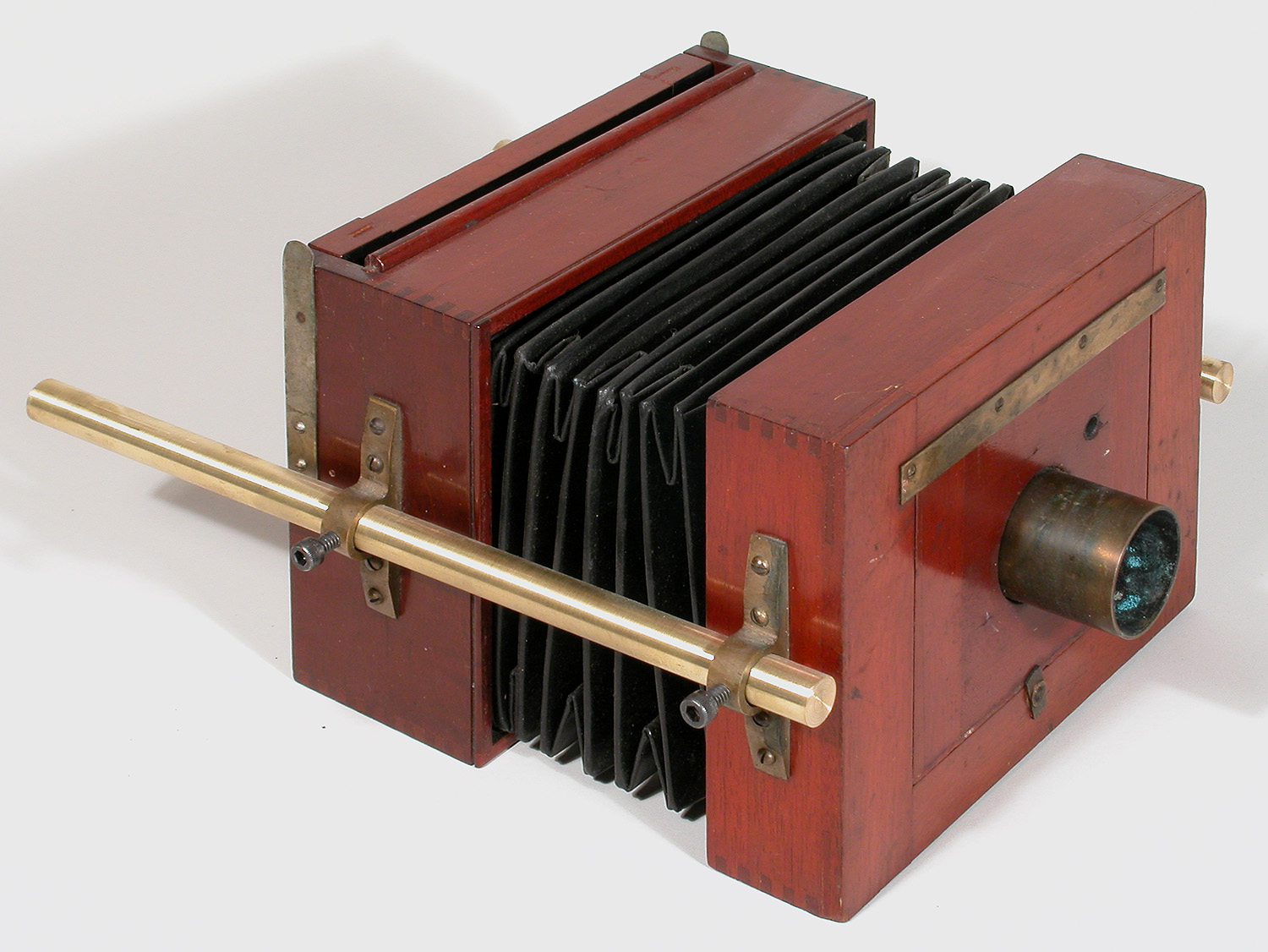
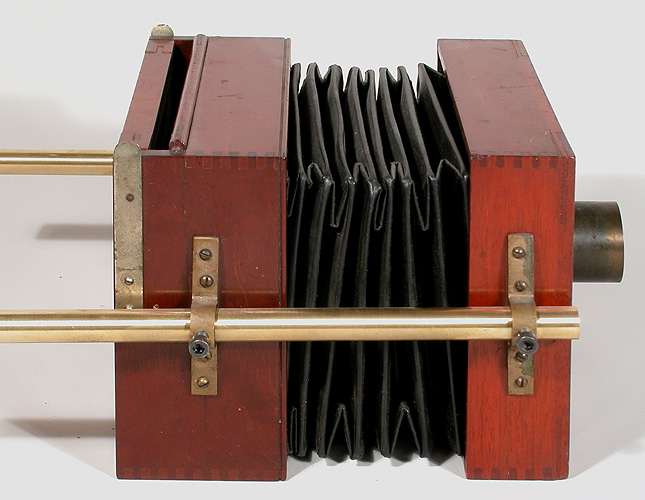
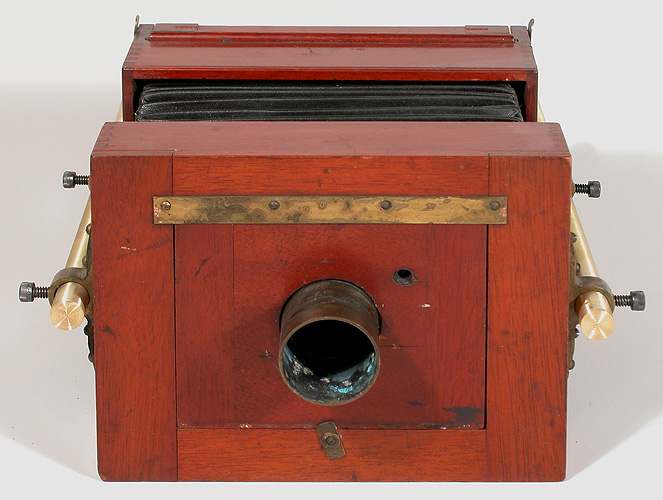
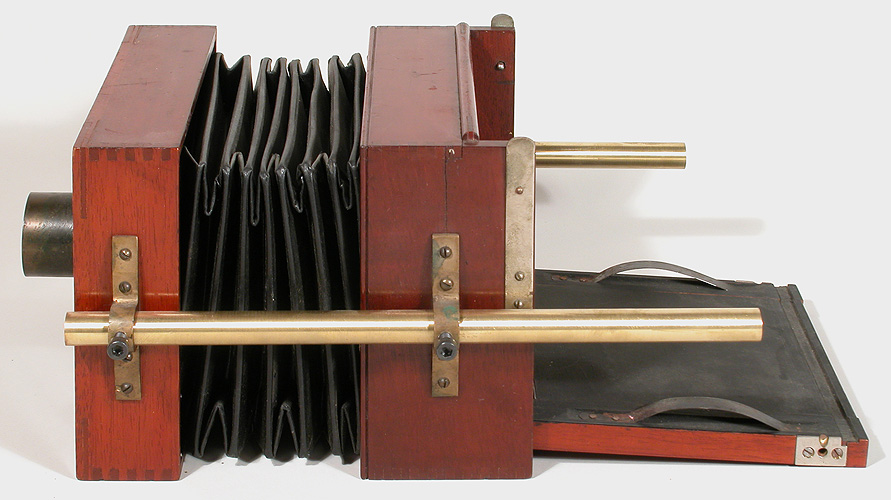
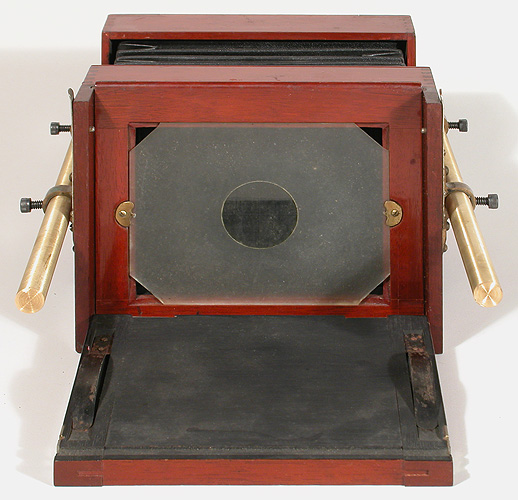
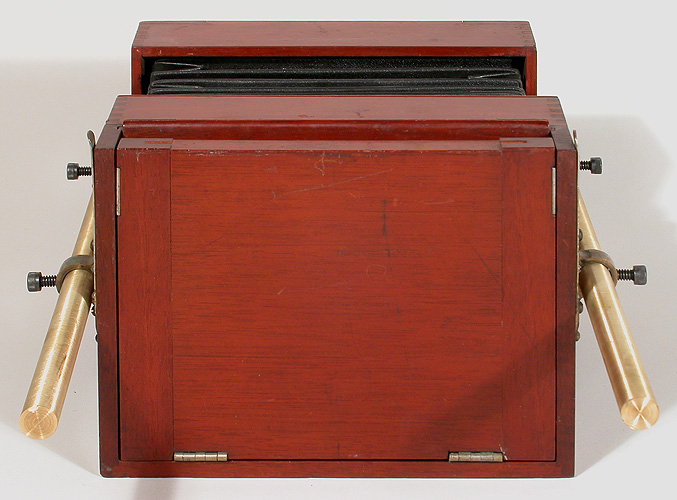
Date Introduced: - ;
Years Manufactured: c. 1898-1900
Construction: rear focus
via sliding on rods; no swing; non-reversing
Materials: mahogany body; no base; black
fabric bellows; brass hardware
Sizes Offered: 4x5 (illustrated);
References:
Illustrated Catalogue Photographic Equipments and Materials for Amateurs,
E.
& H.T. Anthony & Co.,
New York, NY, February, 1898, p. 19
Descriptive Catalogue and Price List of Photographic Apparatus
(Professional Catalog), E. & H.T. Anthony & Co., New York, NY, July
1899, p. 47
Illustrated Catalogue Photographic Equipments and
Materials for Amateurs, E. &
H.T. Anthony & Co.,
New York, NY, April, 1900, p. 45
Initial Thoughts: I suppose this could have
been part of a magic lantern or enlarger, but in that case, I don't
understand the function of the ground glass. The brass rods are an
attempt at reconstructing how this camera would function. There is
no wooden track or bed, nor was there ever one, as the bottom of the
camera bears no screw holes, nor even a tripod mount. The four
brass rings on the sides are original, but the 1/2" diameter rods and
set-screws are new. Apparently, the camera would be focused by
sliding the front or back on the rods, and secured by the set-screws.
The blackened lens barrel, which now contains no lens, has made the only
screw holes in the original lens board, so presumably is original
equipment. Oddly, it has been mounted from the inside, and
traverses a neatly made hole to the front of the lens board. When
purchased, a shutter and rapid rectilinear lens marked "American Camera
Co." was screwed into the rear of the lens barrel, and a hole had been
drilled into the lens board to accommodate a rubber tube to trip the
shutter. It is unknown whether the American Camera Co. or its
founder, Thomas Blair, is responsible for this design. It
certainly is weird enough to be a Blair design. The rear of the
camera sports a ground glass frame that can be completely removed by
sliding it out. The ground glass is protected in transit by
a hinged solid wood back. To take a picture: the image would be
focused on the ground glass with the back down (as illustrated above);
then the ground glass would be pulled up and removed, the back tilted
back up in place, a plate holder or darkslide(a horizontal 4x5 plate
holder measuring a scant 1/2" thick) inserted, the dark slide pulled,
and the shutter actuated. The camera may have used single
darkslides, which are thinner than double darkslides. No wonder it
didn't catch on.
Identified: The engraving below is in the 1903 Anthony Catalog. The illustrated camera does not have the same back, but other microscope cameras did have a solid back cover, and the brass rod focusing is unmistakable and similar in many microscope camera designs. The wooden back protecting the ground glass is provided apparently because it faces upwards. It is called a microscope camera in the catalog, but this type of work is now called macro (magnifications <1). Microscope cameras were featured in many catalogs of the 1880's and 1890's. Scovill catalogs aroung 1886 have no fewer than three variations of microscope cameras illustrated.
Anthony Catalog, 1903
